Everything You Need To Know About Remarketing Today!
When you hear the term "remarketing," one of the first things that come to mind as a marketer is undoubtedly those display ads. While advertising is, by far, the most well-known and widely-used kind of remarketing, there is much more to it provided you know what you're doing and have the correct technology.
That's why, in today's piece, we'll cover all you need to know about remarketing, including what it is, how to set it up, why you should use it, and how to do it correctly. While we'll explain how site tracking and targeted ads operate, we'll also give you a few more options to consider and, last but not least, I'll compare the various approaches for you.
Let's start with the most burning question that you should be asking yourself right now. What is it?
What is Remarketing?
In a nutshell, remarketing refers to any efforts targeted at encouraging customers who have previously interacted with your website to return and, in the best-case scenario, convert. This can be done via a variety of channels, including tailored adverts, email messages, and online push alerts, which we'll go over in more detail later. In the meantime, feel free to look through the image below to familiarise yourself with the cycle of remarketing.
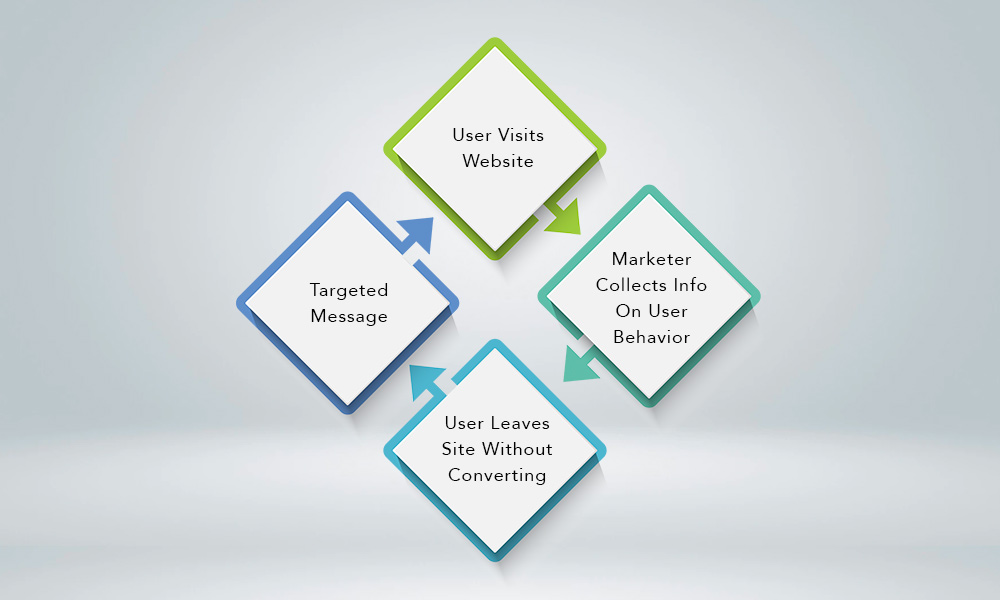
However, as a marketer, you might have come across the term "retargeting". This then raises the question:
Remarketing = Retargeting?
Even seasoned marketers are perplexed by this question, so allow me to try to clarify things for you:
Although some sites claim there is a difference between retargeting and remarketing, they are virtually typically used interchangeably:
Remarketing includes all channels geared at retaining customers, including adverts, emails, and other means of the same.
Retargeting, on the other hand, is used to refer to retargeting adverts.
So, simply put, retargeting is but one of numerous approaches to remarketing. Other sources, on the other hand, claim the contrary, so don't get too worked up over it.
It's more important to understand that Google uses the term remarketing, while most of its competitors use the phrase retargeting to refer to all of their remarketing efforts. However, for this post, we will keep things simple and retain the term "Remarketing".
This then brings us around to why; why should this matter.
Why Use Remarketing?
On their initial visit, the great majority of website visitors do not make a purchase. Did you realise that around 98% of these potential clients abandon your website without purchasing anything? This is not necessarily due to a sudden loss of interest in your products. Most of the time, folks are simply hesitant to purchase the first item they come across. They will need some time to think about your offer and examine the many possibilities accessible to them.
However, while buying online, people are presented with a sea of endless possibilities, so you must ensure that when they are finally ready to make the purchase, your offer is still fresh in their thoughts. This is when remarketing efforts come into play! They remind online users of previously shown interest in items and make it simple to complete the transaction with only a few clicks.
What makes remarketing so much more effective than other forms of marketing?
Precision: For starters, you're targeting clients who have previously expressed an interest in purchasing what you're selling. Add to that the fact that the messages may be highly tailored because you've previously collected information on the user, and it's no wonder that remarketing can achieve incredibly high Click-Through Rate(CTR) and Conversion Rate(CVR) compared to other approaches.
Cost: Regardless of the remarketing strategy used, the Cost Per Click(CPC) is minimal when compared to other marketing efforts.
Effort: The majority of remarketing programmes are simple to start up on your own. They can be automated so that they don't require as much maintenance.
As a consequence, when compared to other marketing approaches, this yields a substantially greater ROAS!
What Are The Various Remarketing Techniques, And How Do They Work?
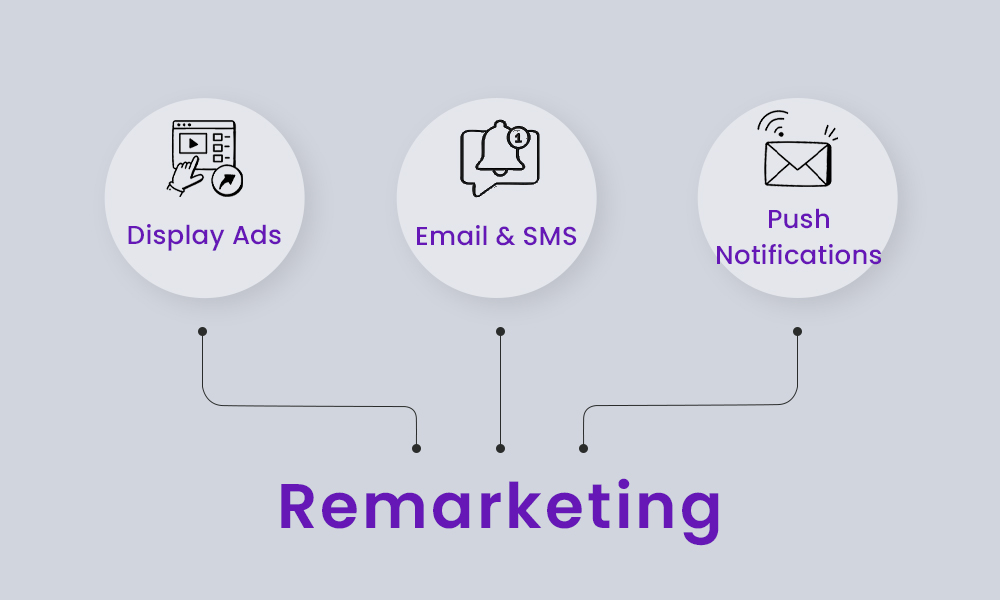
a) Display Advertisements
As previously stated, this is the oldest and most widely utilised remarketing channel.
It works like this: a person visits your website and consents to the storing of cookies on their device. You acquire information about that user and their activities through cookies. When they leave your website, you may utilise the information you collected to follow them to other websites where you can post customised adverts based on what the user has shown an interest in.
How can you create your display ad campaigns:
You may simply create your retargeting advertising; all you need is access to your website's code and a remarketing platform account. Google Ads is the most prominent platform, although there are others, such as:
✣ Bing
✣ YouTube’s video ads
✣ Adform
It just takes a few minutes to set up a GoogleAds campaign, but before you begin, make sure you have a broad concept of what your campaign objectives are and which client categories you want to target:
✣ Do you want to boost conversions, CTR, brand recognition, and so on?
✣ Do you want to target all website visitors or simply those who have already purchased from your site, clicked on a certain category page, or met any other criteria?
Methods for attracting the appropriate individuals:
• Divide your consumers into groups that are similar to one another! Some good instances of segmentation are based on product pages seen, what stage of the funnel they are in, and how frequently they visited in the previous month.
• Visitors near the top of the funnel should be targeted! These have already demonstrated the greatest purchase intent and are hence more likely to convert. Customers with abandoned shopping carts, for example.
• Cross-sell to current customers! Customers who have previously purchased from you are more inclined to do so again.
• Advertisements should be scheduled during times when the target audience is most likely to view them! For example, if your target audience is teachers, you may presume that they attend class in the mornings and will not see your adverts.
• Make any necessary changes! Experiment with different things; with time, you'll learn which sites your advertising work best on.
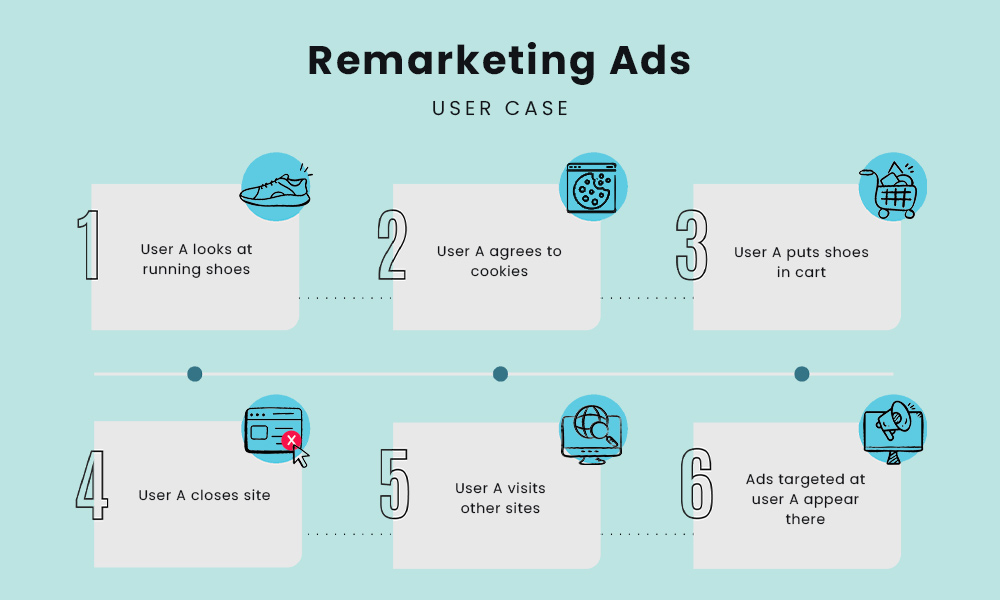
Using the above illustration as a reference, let’s go back to our example customer.
User A requires new running shoes, which you sell on your website.
When they visit your website, they are prompted to consent to the storage of cookies on their devices. They click "yes" without thinking about it since they are eager to get to the shoes.
After some browsing, user A comes upon a pair of shoes they love and adds them to the basket.
However, concerns begin to creep in: Is it a smart idea to buy shoes online without first trying them on? Do they even need a new pair? What if they can find a better match elsewhere? They could also just want some time to think about it, so they exit your site without completing the transaction.
Over the next several days, user A is likely to use his computer for other purposes, such as reading the news, purchasing a birthday gift for his sister, or planning his next weekend vacation. However, surprise! When he accesses the online newspaper, he discovers an advertisement for the same shoes he was looking at. And the same thing happens while he compares airfares for his vacation! And once again when he is purchasing a present for his sister!
Because user A consented to the usage of cookies, you as the marketer knew precisely what he wanted and could follow him to other websites to present him with highly personalized adverts.
b) Remarketing Via Email And SMS
This strategy targets clients who have previously purchased anything from your website or subscribed to your newsletter. Once you have their permission to use their personal information, you may contact them with particular offers that are relevant to them, such as promotions or offers comparable to what they purchased before.
Pro-tip: MailChimp is one automation platform for email marketing that we’ve found to be quite useful for this chapter in our article.
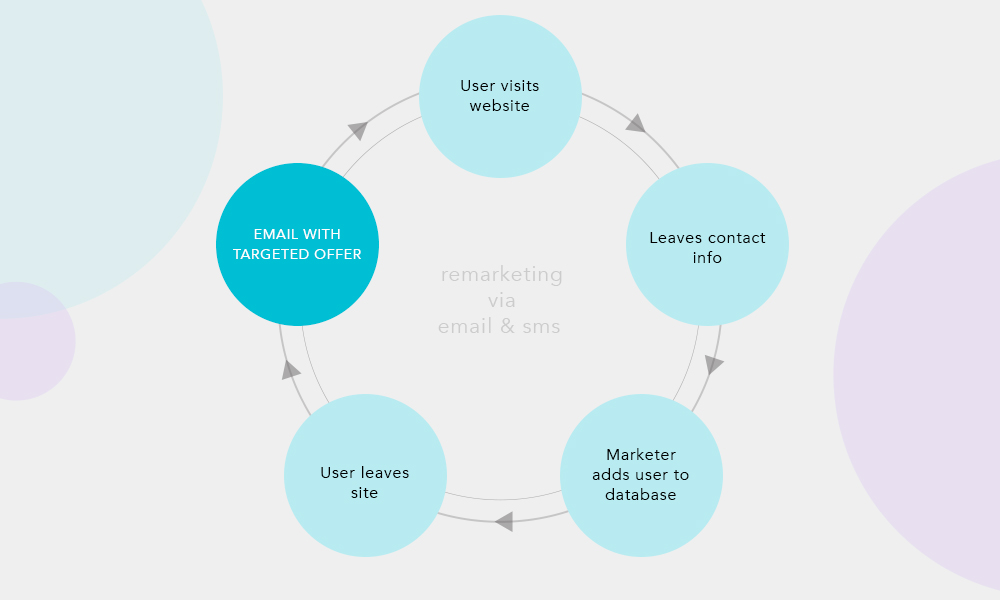
Simply categorise your consumers if you don't want to reach out to all of them, but only certain categories. In this manner, you may identify just those consumers who satisfy the parameters you set, such as
• customers who previously purchased a comparable product
• consumers that abandoned their shopping cart
Customers who looked at a product that wasn't available at the time but is now available
Tip: There are methods to encourage more people to leave their contact information behind, such as by providing free products or discounts in exchange.
It's also termed email retargeting if you link your email subscribers to your ad network and create targeted display adverts just for them.
It is easy to build up campaigns on your website by subscribing to an automation platform.
Consider the following example of User B:
User B previously purchased a school bag from your website. You have his email address now. Summer vacation has just ended, and you're running a school supply promotion.
Because of his previous purchase, you know that user B most likely has a school-aged child and assumes that he is likely to be interested in your advertising. As a result, his email address is added to a database of all consumers who will get this promotional offer.
User B is anxious since his child just came home from school with a list of supplies for the new academic year that is due by next week. He is relieved when he receives your personalised email about the deal and proceeds to your website, where he purchases all of his goods.
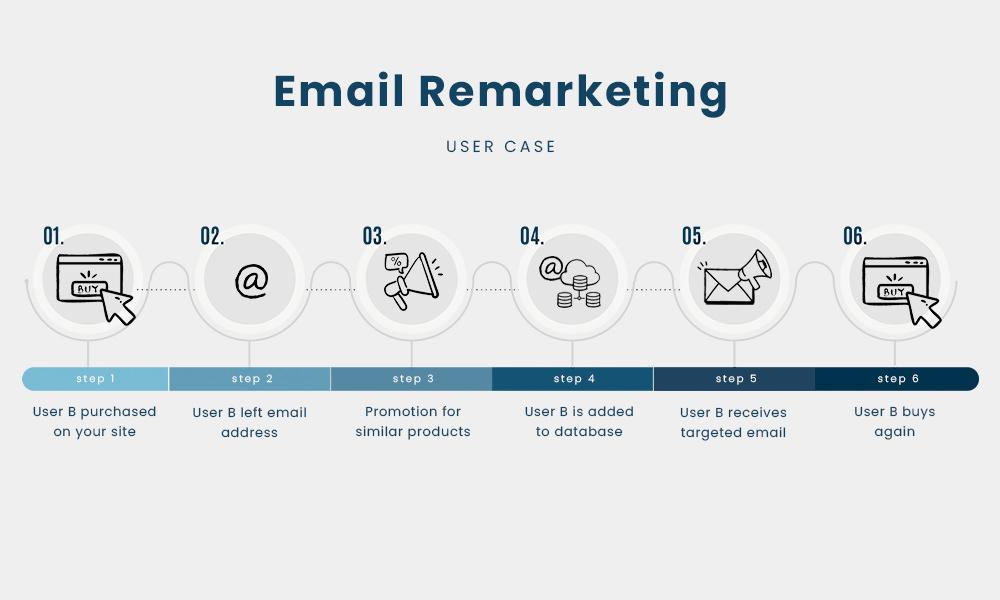
c) Notifications through Web Push
Push notifications are a relatively new remarketing approach that is gradually gaining momentum. These messages are available for both mobile and desktop platforms, and they may be delivered manually or automatically to contact website visitors whose personal information you do not have access to.
In a process known as Native Opt-In, first-time website visitors are prompted whether they wish to restrict or enable messages.
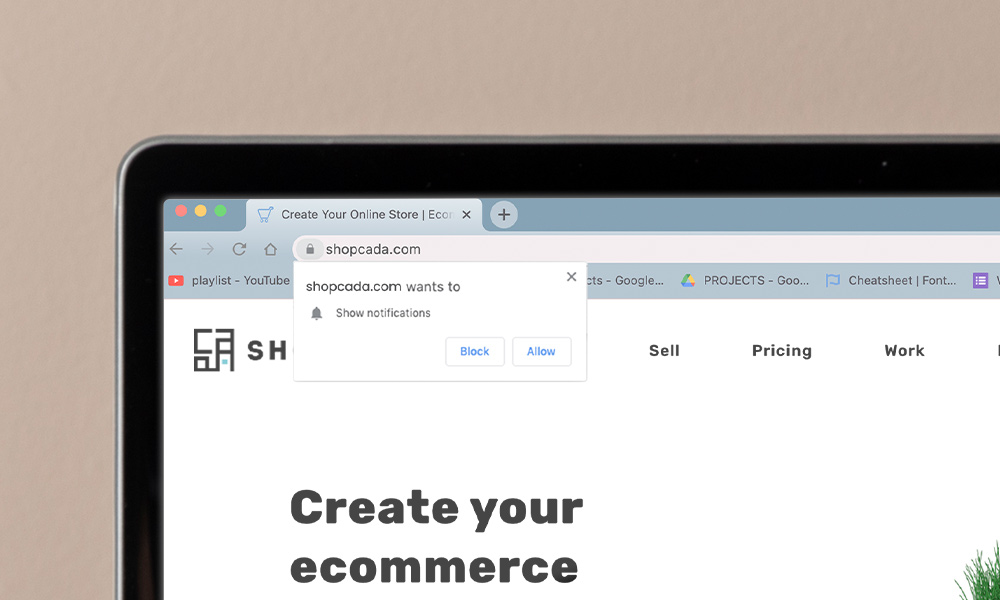
If a user who has opted in now leaves the site, a message can be sent to his browser inviting him to return and complete the transaction. The nice thing about it is that it will be on the user's screen regardless of what he is doing on his computer until he either clicks it away or opens it, so there is no ignoring it.
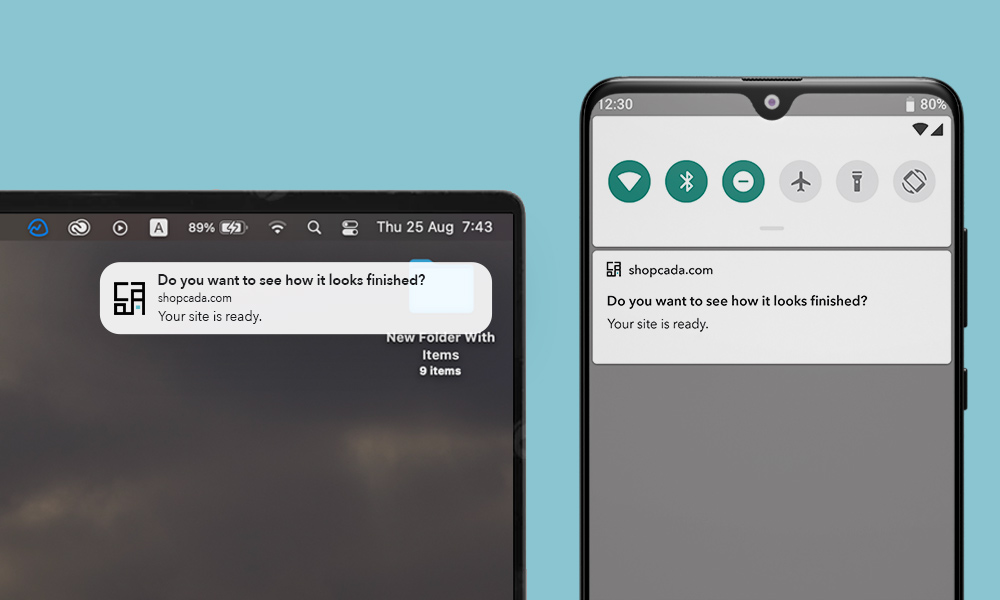
Consider the following example of User C:
User C navigates to your website to seek shoes.
Because you are utilising web push notifications, she gets asked in the Native Opt-In whether she wishes to ban or enable messages.
She clicks "allow" and browses your site for a few moments. Despite liking a pair of red shoes, she abandons the site without purchasing them and without leaving her contact information. After all, the shoes will still be there the next day!
Later that day, she realises she's out of dog food. When she opens her laptop to buy some, the computer displays the following message: "Hello, user C! Hurry! There are just two pairs of these crimson sneakers left. "Are you certain you don't want to lose out on them?"
User C is concerned and doesn't want to lose out, so she rushes to acquire the shoes before it's too late.
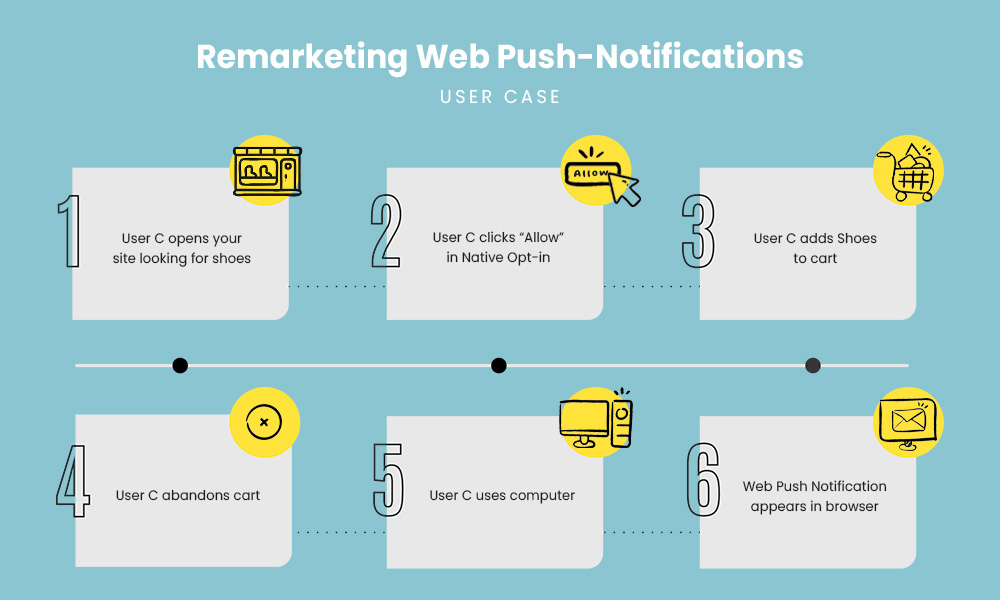
This brings us to our next point - how?
How Does One Track On The Web?
Because site tracking is the technology that powers all remarketing campaigns, let's take a deeper look at how it works. I have noted that cookies allow a website to trace a person to other websites that he visits later. But what exactly is a cookie, and how does it manage to track you throughout the internet in this manner?
✧ How Does A Cookie Make Magic?
When you visit a website, your browser sends a message known as an HTTP request to the server. The website then responds to this message, both with the material you requested and with little text files known as cookies, which the site wishes to keep in your browser. If your browser saves them, every time you visit the website from which a specific cookie was delivered, your browser adds this cookie to the access request it sends to the website. As a result, the website may identify individual users based on their cookies and learn about their activity.
✧ Cookie Party?
Websites often employ external software to manage their cookies, and there are two sorts of providers for this: single website trackers via first-party cookies and multi-website trackers via third-party cookies. While first-party cookies keep information obtained by each of their client websites distinct, third-party cookies allow user information gathered by numerous individual website cookies to be shared among all of their client websites. This implies that websites may track your behaviour not just on their site, but also on other sites.
✧ Cookie Ban?
Up to today, remarketing ad providers relied on third-party cookies. However, Google indicated that the usage of third-party cookies will be prohibited in Google Chrome, the world's most popular browser, beginning in 2022. This indicates that remarketing with display advertisements has a bleak future, at least until a better option is discovered. Other remarketing methods, such as email, SMS, and push notifications, on the other hand, rely on first-party cookies, therefore they will be unaffected by this sudden shift in legislation.
That is all good and well, you say, but which method should we use?
Remarketing Methods
While you must ultimately make that decision for yourself, and it is highly dependent on your goals and budget, here is a comparison of the benefits and drawbacks of each channel:
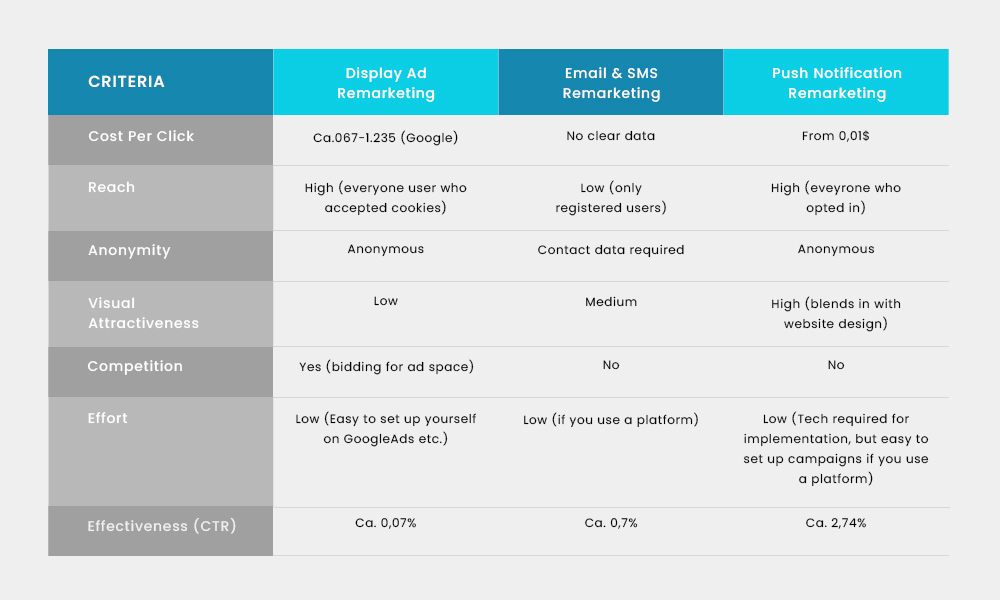
Closing Words
If done correctly, remarketing is a wise investment that may boost your bottom line. Nothing ruins a remarketing plan faster than poor management. While it may appear to be a straightforward task, the best results come from the finest audience segmentation and bidding tactics. At this point, we can only wish you all the best in your remarketing efforts!
More articles please read Go-To-Market Strategies: EVERYTHING YOU MUST KNOW TODAY

